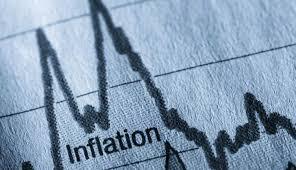News / National
Zimbabwe inflation eases
05 Dec 2024 at 11:08hrs |
0 Views

Zimbabwe's inflation rate eased significantly in November, marking a slowdown to 11.7% from 37.2% in October, according to the Reserve Bank of Zimbabwe (RBZ). The decline was attributed to the central bank's monetary tightening measures, which curbed liquidity and speculative activity in the foreign exchange market. Despite the positive inflation figures, the country continues to face challenges with its dual currency system, as the parallel market exchange rate remains significantly higher than the official rate.
The inflation slowdown came after October's spike, which was driven by a one-off depreciation of the Zimbabwean dollar against the U.S. dollar in September. The official exchange rate currently stands at 25.56 Zimbabwean dollars (ZIG) per U.S. dollar, but the black-market rate remains much higher at approximately 39 ZIG to the dollar, illustrating a persistent divergence between the two markets.
In a statement, the RBZ attributed the inflation reduction and exchange rate stability to the effectiveness of its September monetary policy measures. These measures included tightening liquidity in the economy, which helped stabilize the currency and curb speculative behavior in the foreign exchange market.
Foreign currency inflows have also increased, rising by 19.1% to $11.05 billion in the first 10 months of 2024, compared to $9.27 billion during the same period last year. This increase in foreign currency reserves has provided additional support for the official market, helping maintain a degree of stability in the exchange rate.
In response to ongoing challenges, the RBZ's Monetary Policy Committee (MPC) decided to maintain a tight monetary policy, keeping the policy rate at 35%. Statutory reserve requirements for savings and time deposits have also been kept at 15%, while those for demand and call deposits remain at 30%. These measures are aimed at sustaining the country's financial stability amidst the dual currency market challenges.
The RBZ also unveiled plans for a Targeted Finance Facility designed to support the productive sector, which continues to face liquidity constraints.
Despite the optimism surrounding inflation and exchange rate stabilization, RBZ Governor John Mushayavanhu acknowledged that the gap between the official and parallel market exchange rates remains a significant issue. The central bank continues to work on measures to address this divergence and stabilize the economy further.
As Zimbabwe moves into 2025, the government's ability to address the challenges posed by the dual currency market and maintain inflation control will be crucial in shaping the country's economic future.
The inflation slowdown came after October's spike, which was driven by a one-off depreciation of the Zimbabwean dollar against the U.S. dollar in September. The official exchange rate currently stands at 25.56 Zimbabwean dollars (ZIG) per U.S. dollar, but the black-market rate remains much higher at approximately 39 ZIG to the dollar, illustrating a persistent divergence between the two markets.
In a statement, the RBZ attributed the inflation reduction and exchange rate stability to the effectiveness of its September monetary policy measures. These measures included tightening liquidity in the economy, which helped stabilize the currency and curb speculative behavior in the foreign exchange market.
Foreign currency inflows have also increased, rising by 19.1% to $11.05 billion in the first 10 months of 2024, compared to $9.27 billion during the same period last year. This increase in foreign currency reserves has provided additional support for the official market, helping maintain a degree of stability in the exchange rate.
In response to ongoing challenges, the RBZ's Monetary Policy Committee (MPC) decided to maintain a tight monetary policy, keeping the policy rate at 35%. Statutory reserve requirements for savings and time deposits have also been kept at 15%, while those for demand and call deposits remain at 30%. These measures are aimed at sustaining the country's financial stability amidst the dual currency market challenges.
The RBZ also unveiled plans for a Targeted Finance Facility designed to support the productive sector, which continues to face liquidity constraints.
Despite the optimism surrounding inflation and exchange rate stabilization, RBZ Governor John Mushayavanhu acknowledged that the gap between the official and parallel market exchange rates remains a significant issue. The central bank continues to work on measures to address this divergence and stabilize the economy further.
As Zimbabwe moves into 2025, the government's ability to address the challenges posed by the dual currency market and maintain inflation control will be crucial in shaping the country's economic future.
Source - zimlive
Join the discussion
Loading comments…





















